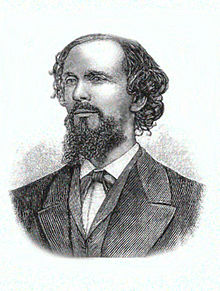User:Jnmhist/sandbox

Allosexual, sometimes shortened to allo, is a term used to describe a person who experiences sexual attraction and does not identify as asexual. The term does not indicate the target of sexual attraction, meaning it could describe someone who is heterosexual, gay, bisexual, or pansexual, for example. It also does not indicate how often an individual experiences sexual attraction or participates in sex or sexual encounters. Unlike other labels, allosexual is not generally something that one would identify themself as, it is moreso used in conjunction with asexual terminology when discussing non-asexuals as a whole.
Terminology[edit]
The prefix allo- comes from the Greek word Állos, meaning “other”, “different”, or “atypical”.[1] -sexual refers to sexual attraction. Therefore, allosexual is a term that refers to sexual attraction towards other people.
The term was coined by the asexual community, as a way to name and discuss the experiences of non-asexual people. It also works to normalize asexuality, by making it one sexuality among others, rather than being a deviation from what is simply 'normal'.
Another competing term to describe non-asexual people is zedsexual, or simply sexual.[2]
Prior to the twenty-first century, allosexual was frequently used in a medicalized context, in contrast to autosexual.
Society and culture[edit]

Allonormativety[edit]
See also: Heteronormativity
Asexuals are estimated to make up 1% or less of the total population and about 1.7% of the lesbian, gay, and bisexual population.[3] Since the majority of people would be classified as allosexual, it is viewed by some as the natural way of being and asexuality as a deviation of this norm. Physical intimacy is considered an essential part of romantic relationships among allosexuals, which can complicate relationships between asexual and allosexual individuals.[4] The concept that all humans experience sexual attraction or desire a sexual relationship can lead to the isolation and marginalization of asexual individuals.[5]
Split-attraction model[edit]
Main article: Split attraction model

The split attraction model differentiates sexual and romantic attraction, meaning romantic and sexual orientation do not always line up.[6] According to this model, someone who is allosexual can also be aromantic, meaning they experience sexual attraction but not romantic attraction.[7]
 | This is a user sandbox of Jnmhist. You can use it for testing or practicing edits. This is not the sandbox where you should draft your assigned article for a dashboard.wikiedu.org course. To find the right sandbox for your assignment, visit your Dashboard course page and follow the Sandbox Draft link for your assigned article in the My Articles section. |
- ^ "Definition of ALLO-". www.merriam-webster.com. Retrieved 2023-11-24.
- ^ "Relationship FAQ | The Asexual Visibility and Education Network | asexuality.org". www.asexuality.org. Retrieved 2023-11-24.
- ^ thisisloyal.com, Loyal |. "1.7% of sexual minority adults identify as asexual". Williams Institute. Retrieved 2023-11-24.
- ^ Clark, Alyssa N.; Lefkowitz, Eva S.; Zimmerman, Corinne (2023-02-12). "Sexual and Affectionate Behaviors in Asexual and Allosexual Adults". The Journal of Sex Research. 60 (2): 242–252. doi:10.1080/00224499.2022.2051161. ISSN 0022-4499.
- ^ Popova, Milena (2019-05-07). Sexual Consent. The MIT Press. doi:10.7551/mitpress/12108.001.0001. ISBN 978-0-262-35359-5.
- ^ Diamond, Lisa M. (2003-01). "What does sexual orientation orient? A biobehavioral model distinguishing romantic love and sexual desire". Psychological Review. 110 (1): 173–192. doi:10.1037/0033-295X.110.1.173. ISSN 1939-1471.
{{cite journal}}: Check date values in:|date=(help) - ^ "Definition of AROMANTIC". www.merriam-webster.com. Retrieved 2023-11-24.
